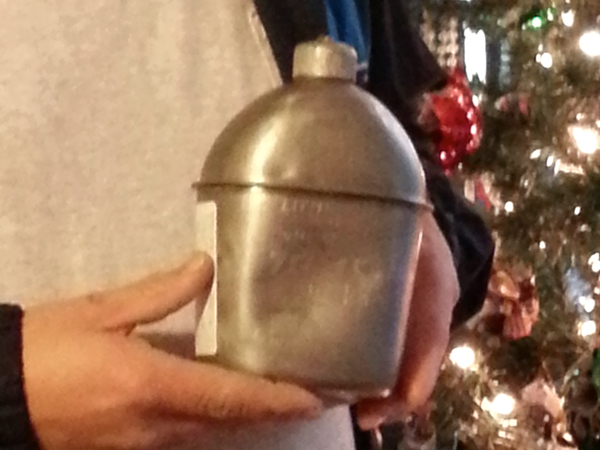The canteen was found in Luxembourg woods. Ted was so overwhelmed, he had to take his time before opening the box. The box was sent by a former servicemen from Fresno, California, who fought in the same part of Europe as Ted’s great-uncle Wally during the Second World War.
For a long time, Ted had been researching the history of his family. His grandmother’s brother was Lt. Wallace Lippincott Jr. who joined the Army and went to war after graduating from University of Delaware. He served in the Battle of the Bulge, and never returned home.
All Ted knew about his great-uncle started to slowly fade when the only people he could talked to about it passed away. First was his grandmother, then his mother and 11 years back was the last time he saw Libby, who was Uncle Wally’s widow. She would sometimes talk about him but she never said much. All he knew was that they got married but never had time for kids as he was soon sent to Europe and died aged 25, in 1945, in Luxembourg.
Luxembourg is also the place where the story of the metal canteen began about 2 years ago. Norbert Morbe manages a small museum together with his wife Romaine, in the town of Berle. The museum has been dedicated to the soldiers who liberated the country. Norbert runs the museum on his own money and sometimes, with the help of a permit, he searches the woods nearby where they live, using a metal detector, to find objects from the battle. That is the place where he found the metal canteen, the philly.com reports.
The metal canteen has an inscription on it. It read: “Lt. Wal. Lippincott, 712 Tank Bn,” together with a serial number and the words Sauer Kraut. He wanted to return the object to its owner but wasn’t sure how to do it, until visitors Vern Schmidt and his wife offered to do it for him. Schmidt, who is also from California, served with the 90th Infantry Division. He said he would be honored to return the canteen and he did try but wasn’t able to find out much about it.
About two weeks ago, Schmidt was on the phone with a newspaper editor, Aaron Elson. Elson’s father joined the same battalion Ted’s great-uncle was in, two weeks before he was killed. According to Elson, the man died on January 14, 1945. And this is how the box arrived at Ted, only a week after.
“I was moved to tears to think that for 60-plus years it laid there,” said Ted after opening the box. He now wants to make a shadowbox for the metal canteen and display it in his great-uncle’s tank, together with his photo.
